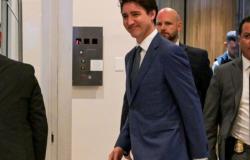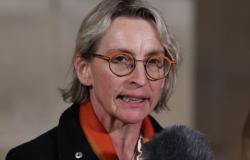Black Friday promotions, a true institution in the United States, started in a mixed economic climate. While the economy remains generally positive, consumers are still feeling the effects of three consecutive years of inflation. This situation has led to a cumulative increase of around 20% in prices, impacting the purchasing power of households and influencing their purchasing behavior.
However, some shopping centers did not hesitate to open on Thursday evening to attract customers eager for good deals. This is the case of the Citadel, an open-air shopping center near Los Angeles, which kept its doors open all night. “We have a large clientele of tourists, people fly from different countries, so opening at 8 p.m. gives earlier access to Black Friday, even if we have been offering discounts for about two weeks,” explains Junior Bolden, an employee of the center.
Stores open from Thursday evening
Among the visitors, many locals also preferred to avoid the Friday crowds. “We told ourselves that everyone was going to come tomorrow, but obviously that’s not the case! It’s hectic this evening,” says Jaiden, a resident of Los Angeles who came with his partner Maria. Even President Joe Biden has participated in this tradition by shopping at a bookstore on the island of Nantucket, where he spends the holidays with family.
Despite the caution displayed by consumers, traders remain optimistic. The National Federation of Convenience Stores (NRF) expects a record, with more than 183 million customers expected in stores between Friday and Sunday. This attendance could mark a significant increase compared to previous years. For the entire holiday season, the NRF forecasts an increase in sales of 2.5% to 3.5% compared to 2023, for a turnover of between $979 and $989 billion.
The explosion of online commerce
Online commerce is also experiencing spectacular growth. Adobe Analytics estimates that sales on Black Friday alone could reach $10.8 billion, an increase of nearly 10% from 2023. Since the start of the holiday season, online sales have already jumped by 9.6% compared to the previous year, confirming the central place of e-commerce in consumption habits.
By clicking on“I accept”you accept the deposit of cookies by external services and will thus have access to the content of our partners.
More information on the Cookie management policy page
I accept
However, economic reality is dampening the enthusiasm of many consumers. “The situation is difficult, but we hope it will get better, we have to be patient,” confides Beatrice Judon, 75, seen in a department store in Washington. Persistent inflation is forcing many households to rethink their priorities. Tyler Austin, 25, describes the challenges of daily life: “Living in the United States is expensive. » He still takes advantage of the sales to renew his wardrobe.
A marked change in behavior
Retailers are also observing a change in behavior. “Consumers are becoming more inventive in their shopping behaviors, often waiting until the last moment to take advantage of the best deals and stocking up when they find them,” said Brian Cornell, CEO of Target. This consumer caution comes against a backdrop of general dissatisfaction with inflation.
Households with modest incomes, particularly affected by inflation, are however starting to see an improvement. “For the first time since 2021, when inflation started to rise, it appears that their real incomes are finally increasing,” observes Michael O'Sullivan, managing director of Burlington Stores. This finding translates into increased sales in stores located in low-income areas. A sign that these consumers are regaining a limited but encouraging purchasing capacity.






